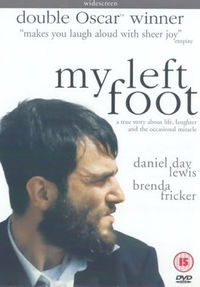Ballyheigue
Ballyheigue (Irish: Baile Uí Thaidhg) is a coastal village in County Kerry in the province of Munster, Ireland. Ballyheigue is famous for its Blue Flag beach and its extraordinary views of the ocean and the mountains of the Dingle peninsula.
Geography
It is approximately 11 miles (18 kilometres) north from Tralee on the R551 road. It is a scenic resort town with many miles of beaches that connect to Banna Strand to the south, and Kerry Head to the north. The bay of Ballyheigue or Kerryhead which latter is situated in lat. 52° 24´ 40" (N.), and lon. 9° 54´ (W.). Ballyheigue is twinned with Gosné in Brittany, France.
Population
Ballyheigue has a total population of 2,035. This is made up of 1460 people from the Ballyheigue DED and 575 people from the Kerryhead DED(CSO 2006).
Census Note: The Civil Parish of Ballyheigue ceased to be used for census purposes in the mid nineteenth century when District Electoral Divisions (DEDs) were introduced.
Ballyheigue comprises the DEDs of Ballyheigue and Kerryhead.
Ballyheigue DED includes the townlands of Ballinclemesig, Ballyheigue, Ballyronan, Booleenshere, Buncurrig, Caherulla, Castleshannon, Cloghanebane, Cloghaneleesh, Dirtane, Doonamontane, Dromgower, Glenlea, Heirhill, Knockane, Tiershanaghan and Toanreagh.
Kerryhead DED includes the townlands of Ballylongane, Dreenagh, Dromatoor, Glandahalin East and West, Glenderry, Maulin and Tiduff.
History
The Cantillons came to Ireland in the wake of the invasion by Richard de Clare, 2nd Earl of Pembroke (in Wales), alias "Strongbow", the leading Cambro-Norman of the day, and with the consent of Henry II, King of England, who was also Duke of Normandy, and Count of Anjou.
Thadhg Cantillon gave Ballyheigue (Baile Uí Thaidhg) its name (Town of Thadhg). Another origin of the name may be explained by the fact that Ballyheigue is located near a beach which in old Irish is "traigh" modern tra.
In the sixteenth century the Cantillon lands were confiscated by Elizabeth I and granted to the Crosbies. One of the Cantillon descendants who fled to France was recognised officially there as Baron de Ballyheigue.
The town is overlooked by a castle built by the Crosbie family in 1812, the castle was burnt down by the "old" IRA during the War of Independence. The castle was allegedly haunted, and a paranormal appearance of a cavalier dubbing a visitor was recorded in June 1962 by Patrick Denis O'Donnell, who vacationed there. The appearance was linked to the famous Danish Silver Raid in 1731, as it occurred on its anniversary. Its grounds have since been turned into a renowned golf course, unfortunately following the destruction of much of the old castle's facade by the developers.
Famous residents
- The writer and painter Christy Brown (My Left Foot- Film version won two Oscars) was a resident of Ballyheigue.
- The military historian and writer, Patrick Denis O'Donnell, on vacation.
- Richard Cantillon, acknowledged by many historians as the first great economic "theorist" was born in Ballyheigue.

References
- The Story of Ballyheigue, by Bryan MacMahon, published by Oidhreacht, Ballyheigue, County Kerry, May 1994 ISBN 09517658 2 5]
- The Crosbie Papers, including manuscripts relating to the Danish Silver Raid, in documents of the Estate of John Viscount Crosbie, NLI MS 5033, National Library of Ireland, Kildare Street, Dublin.
- New Light on the Golden Lion and the Danish Silver Robbery at Ballyheigue, , by B. Mac Mahon, published in the Journal of the Kerry Archaeological and Historical Society. Vol: 24 pp:113-149, 1991. Abstract: This article examines the robbery in 1731 of six chests of silver, part of the cargo of the 'Golden Lion' which was driven ashore at Ballyheigue during the previous year.
- The Lively Ghosts of Ireland, by Hans Holzer, Wolfe Publishing Ltd., London, 1967, 1968, reprinted 1970. See Chapter on Ballyheigue, page 32, recalling earlier article in 1962 by Patrick Denis O'Donnell in Ireland of the Welcomes.
Public Houses
Kirby's (KL), White Sands Hotel (Jimmy Browne's Pub), Reagan's, Flahive's, The Castle Arms.


